Bulgari
Bulgari’s Love Affair with the Serpent
It is one of the most feared animals on the planet, and yet among the most popular attractions at any zoo!
Even though the Bible depicts the snake as the Devil in the story of Creation, most societies venerate the snake and have done so since prehistoric times. From the Aztecs to the Egyptians, the snake’s ability to shed its skin was a symbol of fertility, regeneration, resurrection and immortality. For the ancient Greeks, the snake was a symbol of healing, medicine, death and rebirth. This is why the symbol for a pharmacy often features a snake coiled around a chalice belonging to Hygieia, the Greek goddess of health.
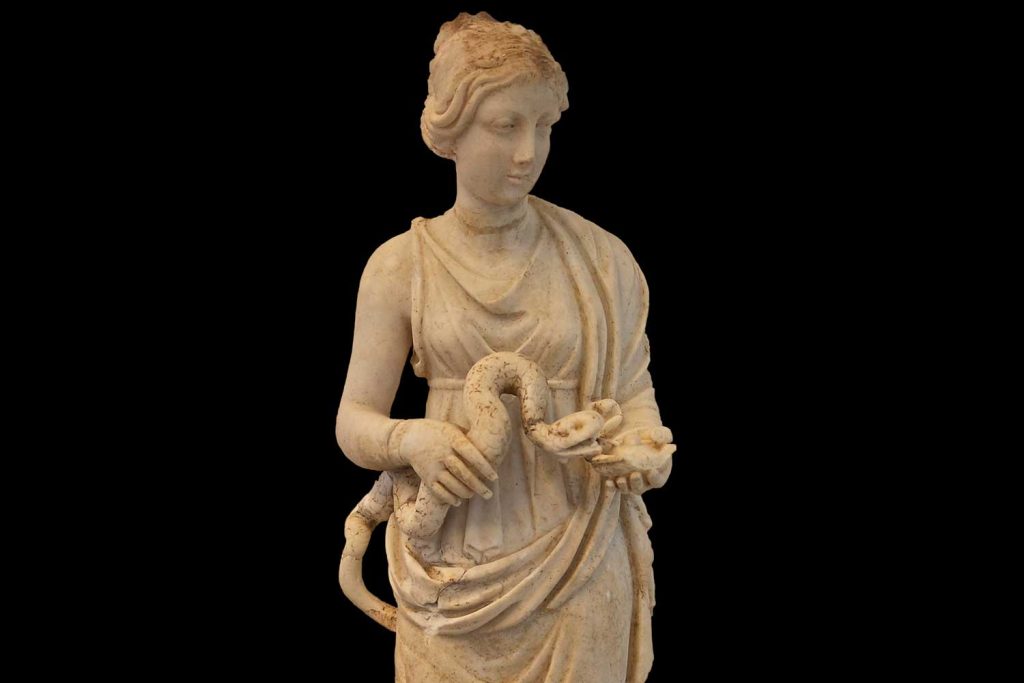
Hygieia, the Greek goddess of health
It was at the end of the 1940s that Bulgari started to make jewels inspired by the snake. Founded in 1884, the Italian jeweler had already gained quite the reputation for its ornate silverware and decorative objects. It wasn’t until 1905 that Sotirio Bulgari started to create jewelry. The company’s early pieces are often difficult to authenticate as, like most jewelers of the time, they did not sign any of their pieces.
The earliest known Bulgari serpent jewelry is the company’s bracelet-watch that was designed in the Machine Age style with its coiled body inspired by a gas pipe (Tubogas in Italian) that would twist around the wrist, and featured a tiny watch in the snake’s head.
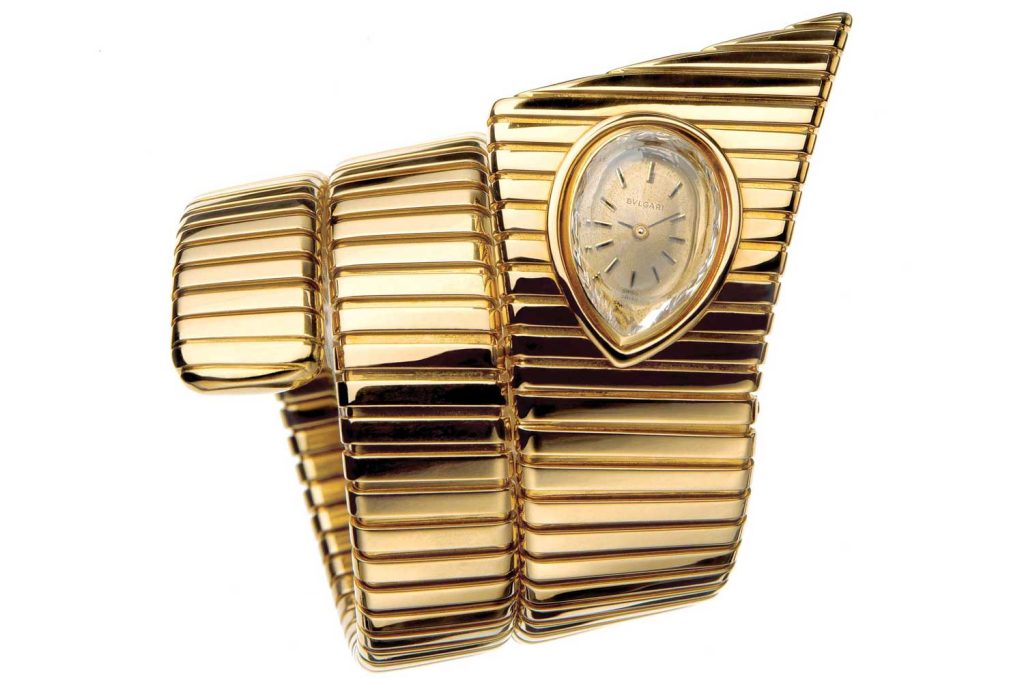
Vintage Bulgari Serpenti Watch during 1940s

Elizabeth Taylor wearing a Bulgari's Serpenti watch
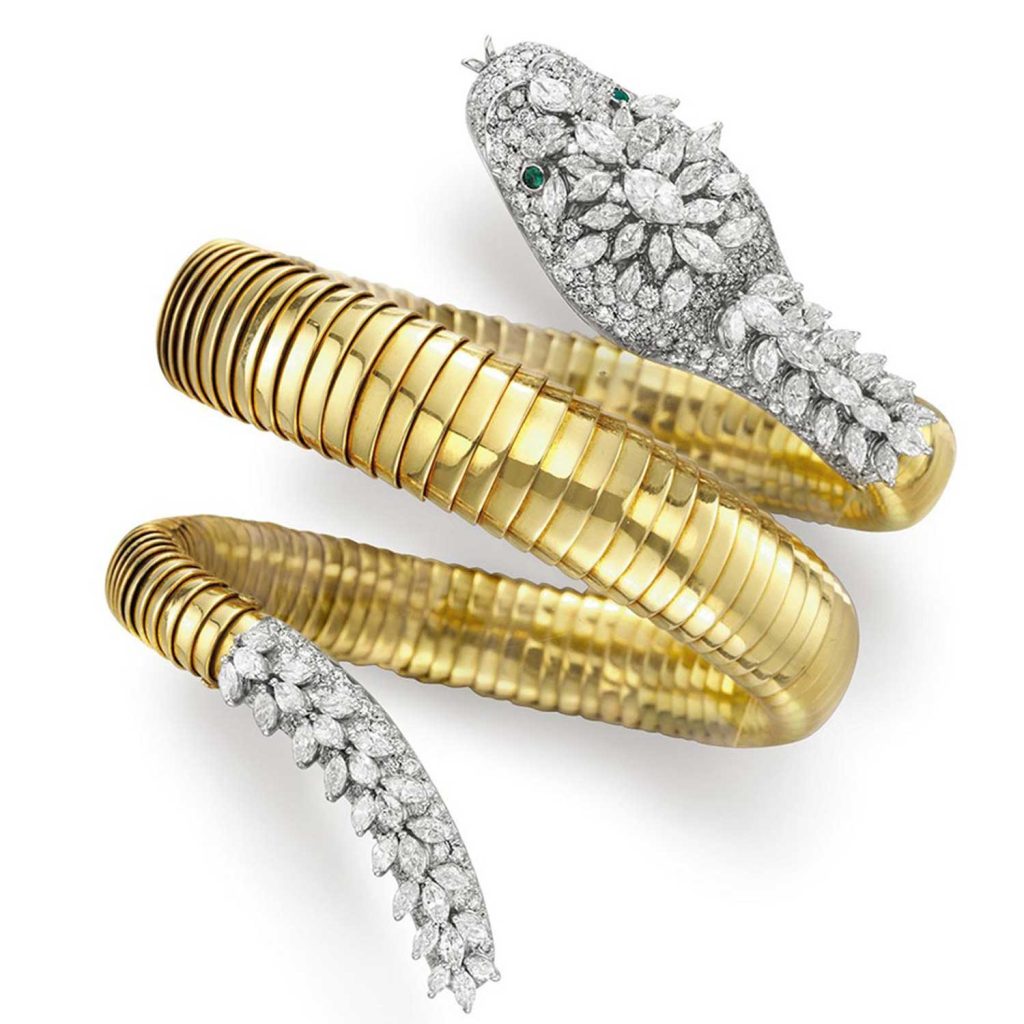
The vintage Bulgari's Serpenti watch worn by Elizabeth Taylor
By 1965, bright colors had become a common characteristic of Bulgari’s Serpenti watches, adding a touch of playfulness to the pieces. Some of the colors mirrored real species of snake such as the milk snake, or the serpente del latte, with its blue, red and black scales. Other snake bracelets featured colors that were fashionable at the time but had no connection to nature. These colorful enamel scales testified to the Bulgari family’s expertise in both design and craftsmanship. Each scale was applied with enamel before being fired in a kiln then meticulously pieced together with tiny screws.
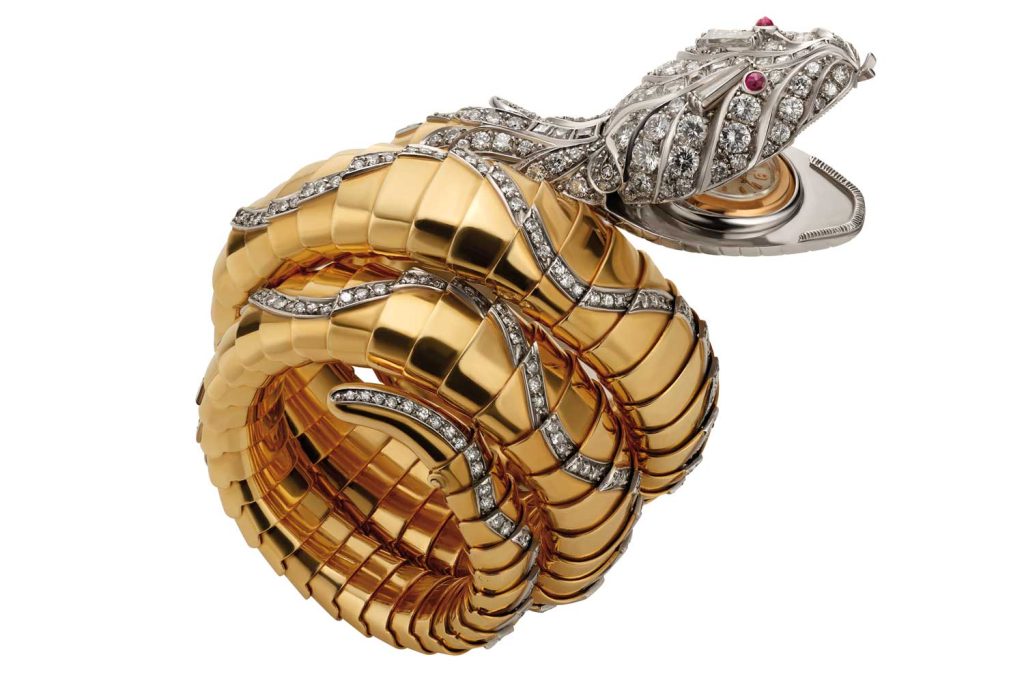
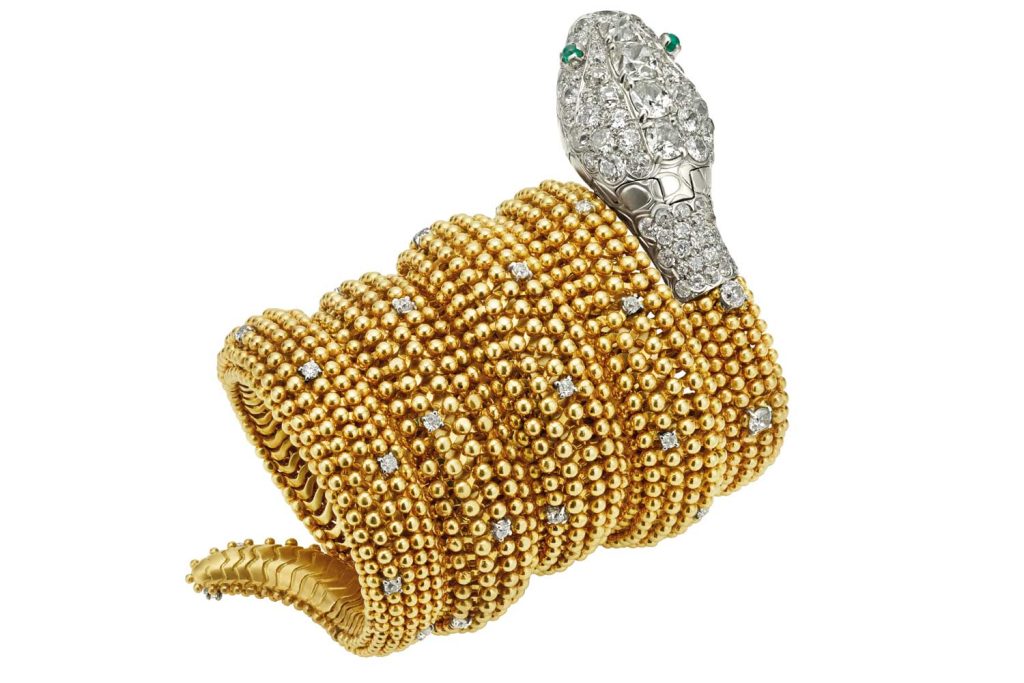
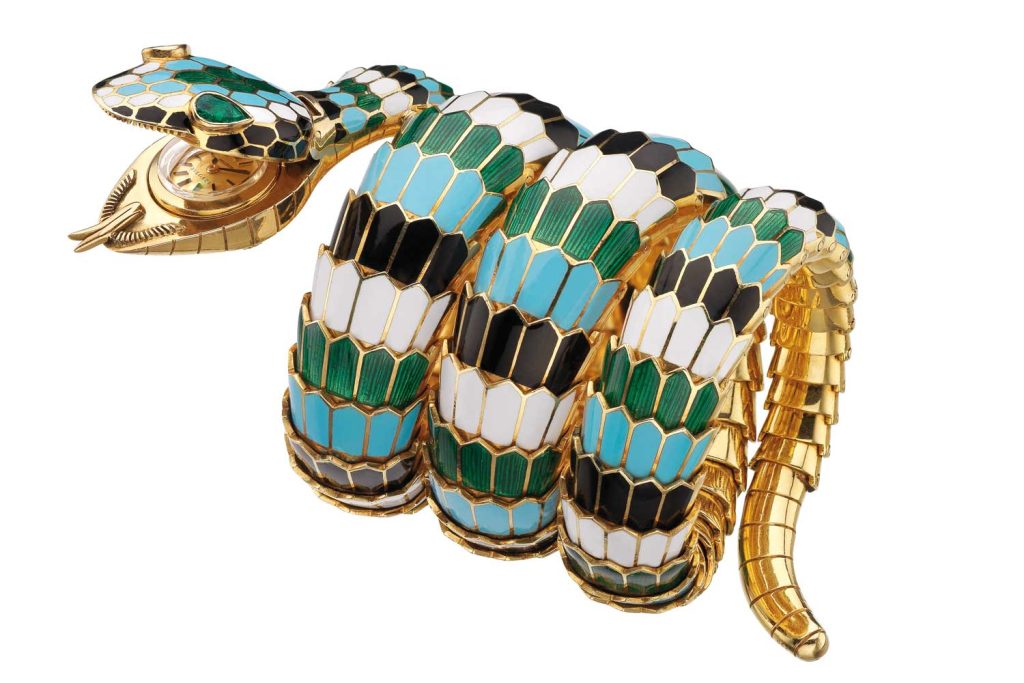
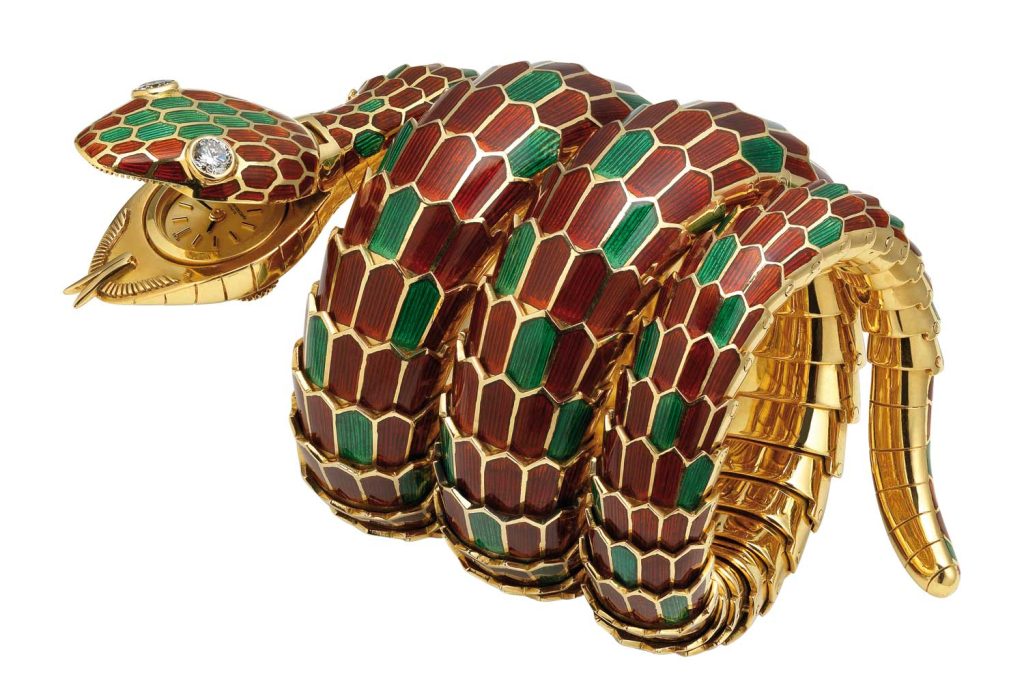
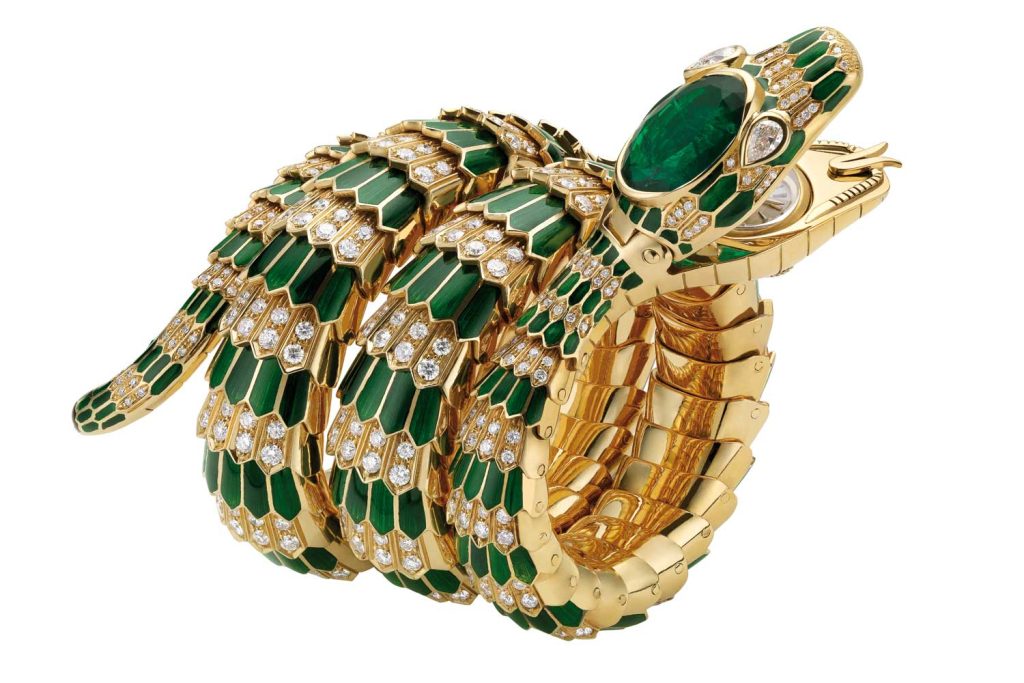
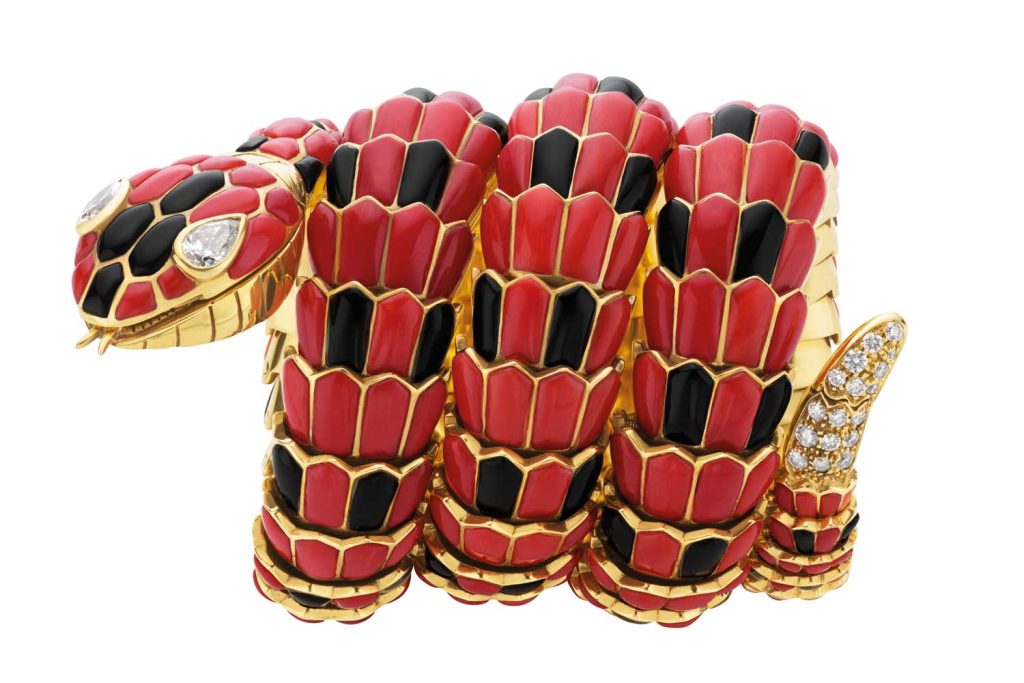
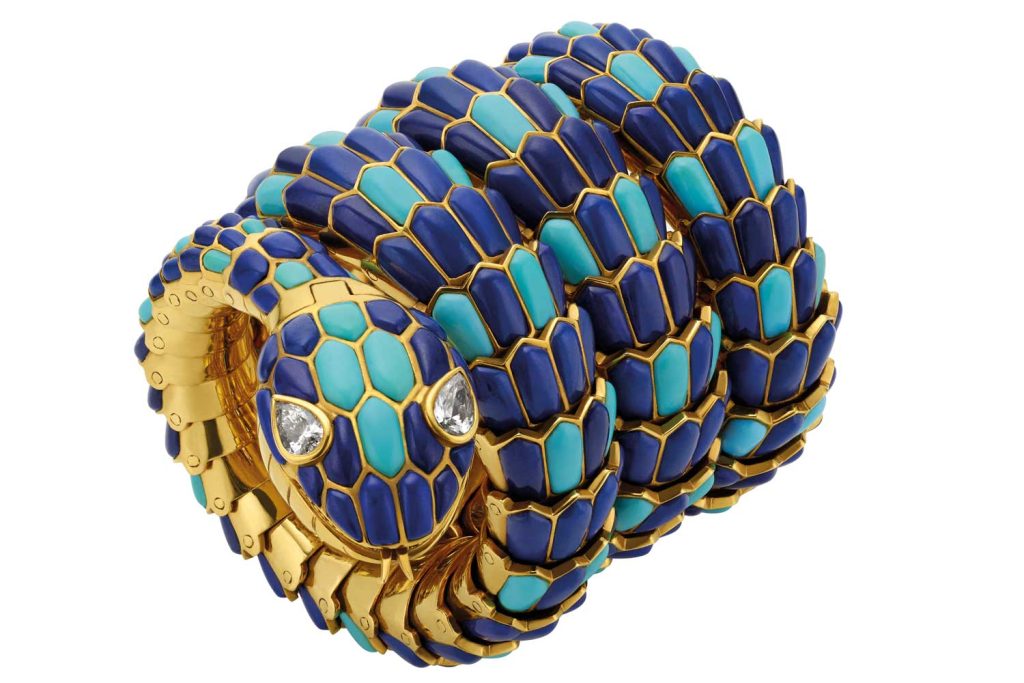
In 2009, Bulgari celebrated its 125th anniversary with new versions of the Serpenti timepiece. Stunning double and triple coil snake bracelets in white gold or pink gold brought the collection back into the limelight in a big way with triangular heads, square scales and watch dials of mother-of-pearl or black onyx.
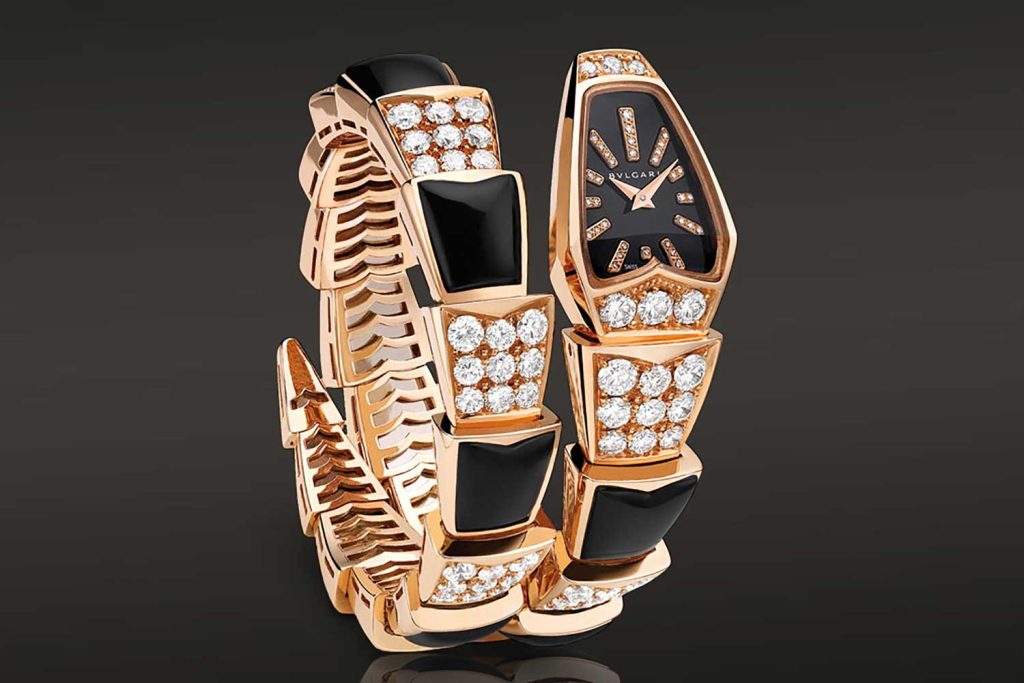
Bulgari's Serpenti timepiece in 18k Pink Gold case set with round brilliant cut diamonds
As sought after today as they were in the past, today’s Serpenti collection is as beautiful as ever with a vast range of models in every color of gold and set with the most amazing choice of precious stones.
From time to time, historical pieces come up for sale at auction much to the excitement of lovers of Serpenti history with prices ranging from $15,000 for non-jeweled pieces to over a million dollars for the most exquisite pieces. It seems that not everyone is running away from snakes after all!










